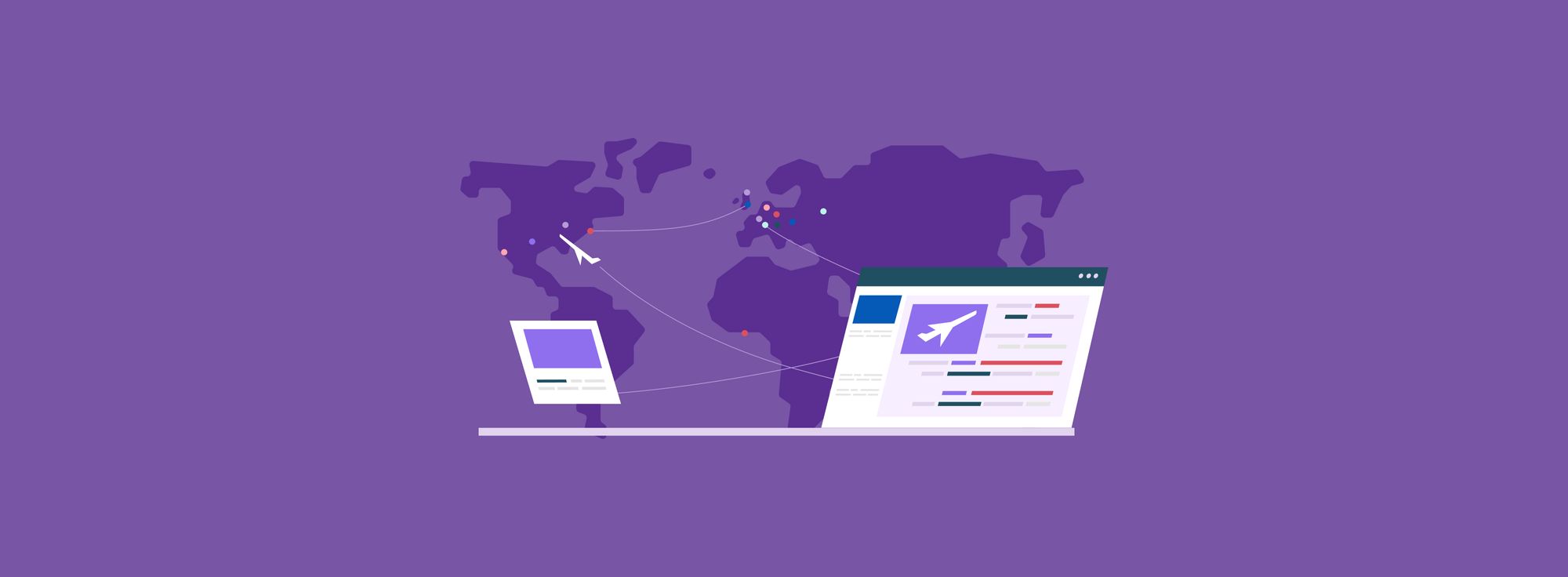Google Flights API: How did it work & what happened to it?
When a tech industry giant buys one of the biggest flight search software companies, makes a new API, and then shuts it down, what happens next?

The Google Flights API offered developers access to aggregated airline data, including flight times, availability and prices. Over a decade ago, Google announced the acquisition of ITA Software Inc. which it used to develop its API. However, in 2018, Google ended access to the public-facing API and now only offers access through the QPX enterprise product. Luckily today, there are many ways developers can access airline content, although some may be faster or easier than others. In this post, we walk through the history and the shutdown of the Google Flights API and share an alternative solution.
What is ITA Software Inc.
ITA Software Inc. (ITA) is a flight information software company founded in 1996 in Cambridge, Massachusetts. ITA was well-known for two products - QPX and the ITA Matrix.
QPX is an enterprise solution offering robust search and pricing through ITA’s platform. It is tailored for larger travel companies that would have higher volumes or require access to enhanced features.
The ITA Matrix is a public interface for what QPX provides - and is still accessible today. It is a basic tool that returns the lowest fares for flights by analysing flight routes and prices from various airline carriers. The ITA Matrix does not allow you to book actual tickets, but just surfaces the results for you to decide whether you will purchase directly from the source. At the time, it was considered the most customisable metadata search engine.
Pairing these two products together, it becomes quite easy to spot similarities to what we now know as Google Flights.
The acquisition of ITA
In July 2010, Google announced their intention to buy ITA. That acquisition came with a $700 million price tag, which signalled a big bet on travel for Google. Google’s announcement was met with heavy scrutiny from the US Government’s Department of Justice who worried about the potential for antitrust violations. Essentially, and speaking broadly, the risk was that Google would buy access to ITA data and capabilities and then take its ball and go home, creating a massively uneven playing field in the market by removing developer access to flight information.
After an eight-month investigation, Google got the green light to purchase ITA, but there were caveats attached. The terms of Google’s acquisition required Google to allow competitors and customers access to the wealth of data they purchased for a minimum of 5 years.
A few years after the acquisition, Google offered QPX Express, which was a simplified version of QPX allowing more companies to access flight information - and this product was better known as the Google Flights API.
The thought at the time was that the Google Flights API would make it easier for consumers to find and book flights, enable quick comparison shopping for airlines and agencies, and promote a healthy travel market by increasing competition and innovation. To enable more sellers, QPX Express offered the first 50 queries for free and charged a per query fee of $0.035 thereafter.
The shutdown
In 2018, Google shut down QPX Express. The terms of their acquisition - powering access to the public-facing API program for five years - had been completed. The end of service announcement for QPX Express provided 6-months notice for clients. In addition, as part of the announcement, Google reduced the rate on API calls for existing users. The usual first 50 queries for free remained, but per query costs would fall to $0.02.
One of the reasons Google shared for shutting down the Google Flights API was dwindling interest amongst travel companies, startups, and consumers. This was particularly surprising given the fact that ITA was one of the most successful and popular airfare brokers pre-acquisition. In addition, ITA had a range of active customers like Orbitz, Kayak, and CheapTickets along with airlines such as American and United. There was speculation that Google was looking to shift their focus to customers instead of businesses and that they wanted to amplify and improve Google Flights to compete more directly with OTAs and metasearch engines.
QPX for enterprise was not part of the shutdown and still is available today. In 2021, ITA Software by Google has a range of customers and airlines and offers access to availability, pricing and shopping, and support and servicing.
The Google Flights API was essentially a data pipeline that developers could plug into to programmatically view, search, and compare flight times, availability, and prices. But, travel data is like water. Shutting down one pipeline doesn’t mean the data stops flowing. It just means that data has to find a different place to flow — like Duffel.
Duffel’s Flights API is Built for the Future of Travel
Duffel's Flights API enables new and existing travel merchants to start selling flights by offering search, book, seat reservation, and paid extra additions from 150+ airlines seamlessly through a developer-friendly platform.
Let’s look at an example to see how Duffel’s API works. Built on a RESTful architecture, providing JSON responses, and using OAuth 2.0, Duffel gives developers the security and flexibility needed to make and manage booking requests with a few lines of code. First you’d create an offer request (e.g. a search) detailing which passengers are travelling where. Then, you’d include the slice, the path from one originating airport to the destination airport. Using Duffel, you can input that variable to the API simply by calling its airport code (LHR) or city abbreviation (LON). Duffel will pull up offers, containing the ideal flights/segments, that you can book. When you’ve found the one that suits you, you use an offer ID to create an order along with additional information about each passenger.
Getting started is easier with quality developer documentation that gives developers clear steps on how to go from sign-up to your first order in no time. Using Duffel’s API, you can search, book, and cancel flights, or add any additional features like seats, checked bags, or loyalty information for your customers. Duffel also supports the way travel sellers run their business, allowing you to hold an order and pay later or view offer and order conditions.
To get started with Duffel, all you need to do is create an account, complete the tutorial, and from there you can start building and prototyping your app in Duffel’s developer sandbox. When you're ready to launch and start booking flights, you can generate a live token and start using it straight away to book real flights for your customers.
Now it’s your time to take control of your travel business and build for the future of flights with the Duffel API. Start building >
